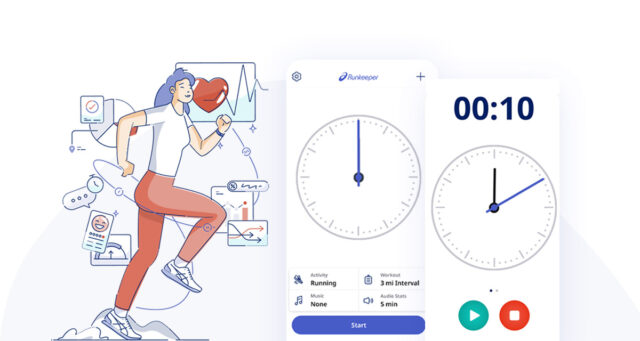We’re continuing our weekly workout series with an interval workout that is all about building endurance and helping you run at a more challenging pace for longer.
If you ask many runners, they will say that the tempo workout run — a moderately hard, continuous run — is more intimidating than an interval workout. Tempo intervals maintain the same principle of a tempo run — a moderately hard, prolonged effort — but break it up with a short recovery jog to make the run less nerve-wracking.
What is a tempo run?
The term can encompass various types of runs that feature running at a harder pace for a prolonged period of time, including marathon or half marathon goal pace runs. Most commonly, the tempo run indicates a run of 20-40 minutes done at your threshold pace — the pace you would be able to hold for an hour-long race (between 10K and 10-mile race pace for most recreational runners).
The workout
- Warm-up with 10-15 minutes of running at your easy pace
- 2 x 10 minutes at a moderately hard effort with 3 minutes easy running in between
- Cool down with 5-10 minutes of running at your easy pace
A tempo run helps you improve both your endurance and your ability to hold a faster pace for a longer period of time. Remember that your pace is always in relation to your current fitness level: not where you want to be or where your running buddies are.
Easy pace should be a slow, comfortable pace, about 1-2 minutes slower than your race pace. In terms of perceived effort, these should be a 3 on a scale of 1-10, with 1 being a very light jog and 10 being an all-out sprint. Tempo pace is moderately hard, about a 6 on the effort scale of 1-10. Your breathing should be slightly labored but you should still be able to speak in short sentences. If you are using pace as a reference, you can plug a recent race time into a pacing calculator to determine your tempo pace. Usually, it’s about 10 seconds per mile faster than your half marathon pace.
So what are you waiting for, get ready, get set, go! Promise you’ll be feeling nice and strong after knocking out this workout. You can track your workouts with the ASICS Runkeeper app.
Please note: This blog is not intended to be a substitute for professional medical advice, diagnosis, or treatment. Always seek the advice of your physician or other qualified health provider with any questions you may have regarding a medical condition.






